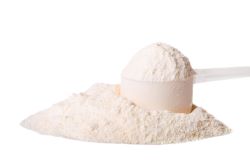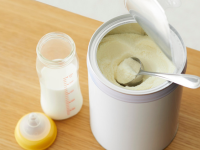Resources
Search >>
Search >>
After months of fine-tuning flavor, texture, and active ingredients, a new nutritional formula was ready for scale-up. This case study explores the successful transition from lab-scale to full-scale production—preserving product integrity across thousands of gallons.
Join us for a focused session on Eurofins’ new Product Certification program—designed to set a higher standard for quality and transparency across the dietary supplement, food, and retail industries. Learn why certification matters, how the process works, and what makes Eurofins uniquely qualified to deliver a seal backed by nearly 100 years of testing expertise.
Discover how GLP-1 medications are reshaping consumer behavior and driving innovation in food, beverage, and supplement industries , ushering in the “smaller-appetite era” of nutrition and wellness.
Eurofins Food Chemistry Testing, Madison and Eurofins Assurance are pleased to announce the launch of Clean Sport Certified. This Product Certification programme is designed to safeguard the quality of dietary supplements, ingredients and food intended for athletes. Brands, retailers, and facilities in the dietary supplements industry can leverage this programme to demonstrate their commitment to regulatory compliance and quality. Click to learn more about this new certification.
Whole genome sequencing is no longer just a research tool. It’s a critical asset in food safety, outbreak response, and public health protection. Read our blog to learn more about whole genome sequencing and how it helps us better understand organisms like Salmonella and Cronobacter in food and infant formula.
Explore why technical diligence is critical in food & beverage M&A. Learn how Eurofins helps private equity firms assess scalability, supply chain stability, and innovation pipelines to reduce risk and drive growth.
The FDA and USDA are seeking public input to define ultra-processed foods (UPFs), aiming to shape future labeling, regulation, and consumer awareness. Learn how this RFI could impact food policy and public health.
With the overall market movement towards "better for you" foods, many companies have already started adding new or reformulated products to their portfolios. Click to read our blog about the market action being taken and strategies companies have deployed to appeal to the Make America Healthy Again movement.
Did you know the history of Eurofins Food Chemistry Testing, Inc. in Madison, Wisconsin dates back to 1929? Check out our infographic to learn more about the rich history of the laboratory.
Discover how Eurofins Product Development & Innovation helps private equity firms turn promising food & beverage startups into scalable, profitable brands through technical expertise, consumer insight, and product development rigor.
















